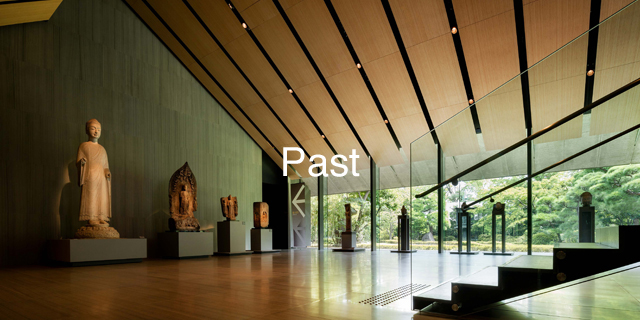
- Museum Collection Exhibition
Pine, Bamboo, and Plum: Auspicious Designs in Celebration of the New Year - January 9, Saturday- February 14, Sunday, 2016
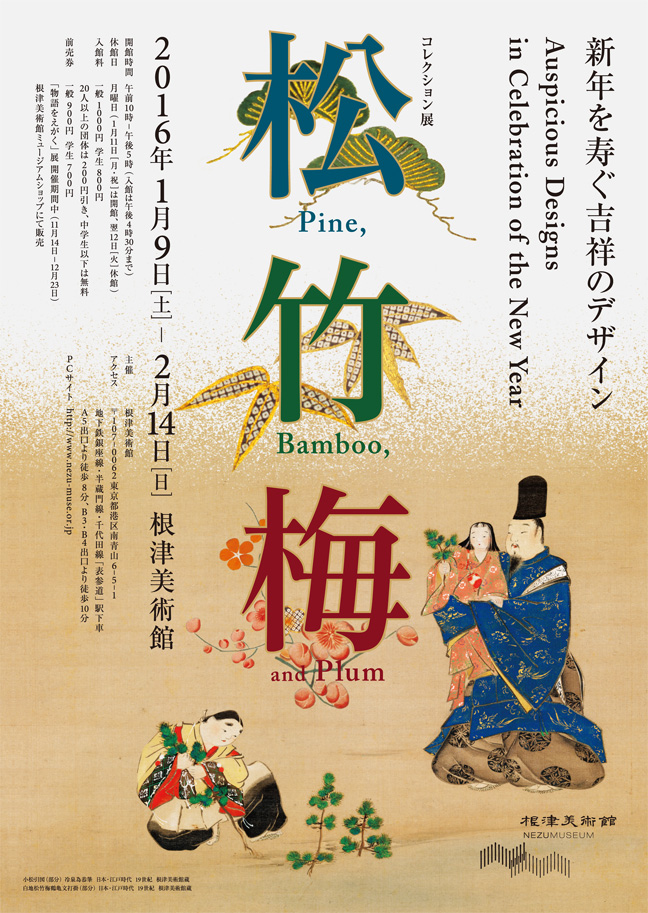

| Closed | Mondays, except 1/11, and closed on 1/12 |
|---|---|
| Hours | 10 am to 5 pm (entrance closed at 4:30 pm) |
| General admission | Adult 1000 yen, Student 800 yen |
| Gallery | 1 |
Together, pine, bamboo and plum formed an auspicious design that was widely used from the Muromachi period onward. However, even before that time the three motifs were individually significant to Japanese culture and to people’s lives.
The distinctive trunks and branches along with the evergreen needles of the pine tree conveyed an otherworldly power and the bamboo too, with its straight, verdant stalks and dignified form, seemed to possess a divine nature. People also felt something inexplicable and miraculous in the way the old plum tree seemed instilled with new life when its sweet flowers blossomed in an otherwise barren season.
We hope that these paintings and decorative art objects incorporating designs of the three motifs of pine, bamboo, and plum, both independently and in combination, will inspire a deeper appreciation of the felicitous symbolism and celebration of longevity that they embody.
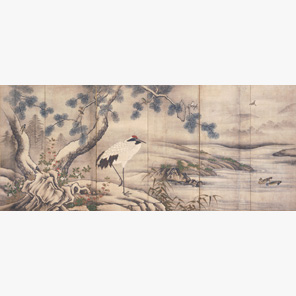
- Pine Trees and Cranes
- Japan Edo period, 17th century Nezu Museum
- Many so-called bird-and-flower paintings of the four seasons depict large pine trees. People must have sensed a powerful vitality in the ability of the pine to retain its green needles through the desolate winter and associated the tree with longevity. In this pair of screens, the addition of three cranes further heightens the celebratory tone of the image.
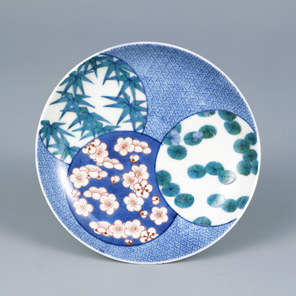
- Dish with Pine, Bamboo and Plum Design
Hizen ware, nabeshima type - Japan Edo period, 17th century Nezu Museum
- Pine, bamboo, and plum motifs are painted in green and red pigments inside three overlapping circles. The surrounding area is filled with an intricately detailed Bishamon kikkō interlocking hexagon design in blue and white. The piece is perfectly suited to celebratory occasions and amply demonstrates the superb design quality and technical skill of Nabeshima-type wares.
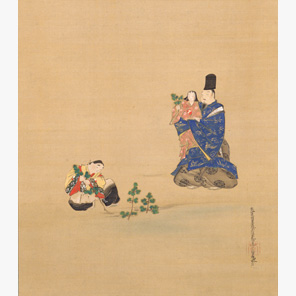
- Pulling Pine Saplings
By Reizei Tametaka - Japan Edo period, 19th century Nezu Museum
- In the Heian period, the custom of pulling up pine saplings on the first Day of the Rat of the New Year according to the Chinese Zodiac was practiced to bring long life. Reizei Tametaka (1823–64) frequently depicted such classical traditions in his paintings.
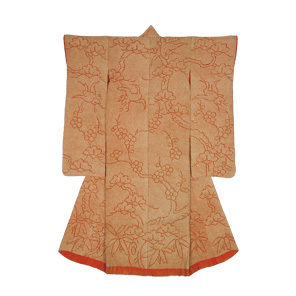
- Furisode Long-Sleeved Kimono with Pine, Bamboo and Plum Design on Red Ground
- Japan Edo period, 19th century Nezu Museum
- The entire surface of this robe is covered with tie-dyed dots made by pinching tiny sections of the silk and tying each one at the base with thread before the silk was dyed. The spotted pattern creates a carefree composition of pine, bamboo and plum with cranes.
